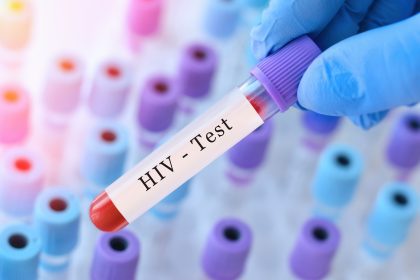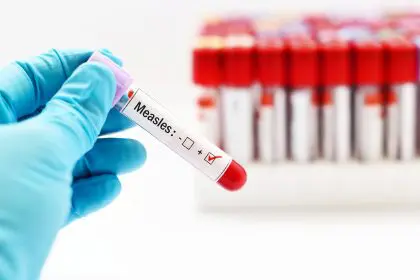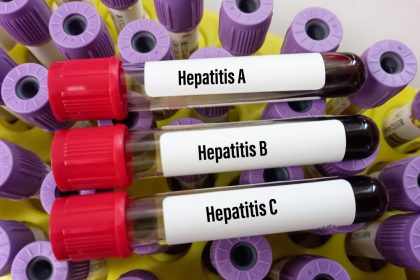A newly identified COVID-19 variant designated NB.1.8.1 has been detected in the United States through international travel surveillance programs, following significant case increases in several Asian countries. The Centers for Disease Control and Prevention has confirmed the strain’s presence among travelers from 9 countries, raising questions about potential community transmission and public health preparedness.
The variant’s detection through airport screening programs demonstrates ongoing surveillance capabilities while highlighting how international travel continues to serve as a primary vector for viral spread across borders. Understanding this variant’s characteristics becomes crucial for assessing potential impacts on domestic health systems and community transmission patterns.
International surveillance reveals widespread geographic distribution
The NB.1.8.1 variant has been identified among travelers arriving from China, Japan, Vietnam, South Korea, Taiwan, Thailand, France, the Netherlands, and Spain, indicating broad international circulation beyond its initial Asian emergence. This geographic diversity suggests the strain achieved significant community transmission across multiple regions before detection in the United States.
Airport testing programs conducted voluntary nasal swabs between April 22 and May 12, providing early warning capabilities that enabled identification of the variant before widespread domestic circulation. These surveillance systems demonstrate the value of proactive monitoring at international entry points for tracking emerging viral threats.
The presence of the variant across both Asian and European countries indicates rapid international spread that likely occurred through normal travel and commerce patterns. This distribution pattern reflects how modern transportation networks enable swift global circulation of infectious disease variants.
Domestic cases suggest community transmission potential
Health officials have identified NB.1.8.1 cases in Ohio, Rhode Island, Hawaii, California, and Washington states, with some cases dating back to late March and early April. The geographic spread across multiple states suggests that community transmission may be occurring beyond initial travel-related introductions.
Despite confirmed domestic cases, overall COVID-19 testing has shown a 12% decrease in positive results, indicating that the new variant has not yet triggered widespread increases in diagnosed infections. This pattern suggests either limited community spread or detection challenges that may not capture the variant’s true circulation.
The timing of domestic cases, with some occurring in March and April, indicates that the variant may have been circulating in US communities for several weeks before airport surveillance programs identified it among international travelers.
Asian countries experience significant hospitalization increases
China has reported substantial increases in severe COVID-19 cases, with the percentage of severely ill respiratory patients rising from 3.3% to 6.3% over the past month. Additionally, emergency department patients testing positive for COVID-19 increased from 7.5% to 16.2%, indicating significant healthcare system impacts.
Taiwan has experienced a 78% increase in COVID-19 hospital admissions, demonstrating the variant’s potential to create substantial healthcare demands even if individual case severity remains similar to other strains. These increases reflect the cumulative impact of higher transmission rates on healthcare capacity.
Hong Kong authorities have responded to 12-month high hospitalization rates by reinstating mask recommendations for public transportation and crowded settings. This policy reversal indicates that even regions with previous COVID-19 experience consider the variant’s spread concerning enough to warrant renewed protective measures.
Viral characteristics indicate enhanced transmission capability
World Health Organization assessments suggest that NB.1.8.1 demonstrates greater ability to bind to human cells, potentially explaining its apparent transmission advantages over other circulating variants. This enhanced cellular binding capacity may contribute to more efficient person-to-person spread in community settings.
Current evidence indicates that the variant does not cause more severe illness or demonstrate superior immune evasion compared to other circulating strains. This characteristic pattern suggests that increased transmission rather than enhanced pathogenicity drives the variant’s competitive advantage.
The variant represents a descendant of the Omicron family, maintaining genetic relationships with previously circulating strains while developing specific mutations that affect transmissibility. Understanding these evolutionary relationships helps predict potential impacts and guide response strategies.
Symptom profile shows distinctive characteristics
Individuals infected with NB.1.8.1 may experience persistent low-grade hyperthermia, characterized by sustained body temperature increases between 37.6°C and 38.1°C without typical fever symptoms. This temperature regulation disruption represents a distinctive feature that may help identify infections.
Upper respiratory symptoms including sore throat, cough, runny nose, and mild fever remain consistent with other Omicron subvariants, providing familiar symptom patterns for healthcare providers and patients. These respiratory manifestations continue representing primary diagnostic indicators.
Additional reported symptoms include gastrointestinal distress, neurological effects such as headaches and concentration difficulties, extreme fatigue, and sleep disturbances. This broad symptom profile reflects the variant’s potential to affect multiple body systems beyond respiratory tract involvement.
Public health recommendations emphasize proven strategies
Health authorities continue recommending vaccination maintenance including recommended boosters to reduce severe illness risk, emphasizing that existing vaccines likely provide meaningful protection against serious outcomes. Vaccination remains the primary tool for preventing hospitalization and death.
Mask wearing in crowded or enclosed spaces receives renewed emphasis as a transmission reduction strategy, particularly given the variant’s enhanced binding capability and transmission potential. This recommendation reflects recognition that respiratory protections remain effective against airborne transmission.
Standard hygiene practices including regular handwashing and sanitizer use continue providing important infection prevention benefits, while symptom monitoring and isolation protocols help prevent community spread when infections occur.
Healthcare systems prepare for potential impacts
The hospitalization increases observed in Asian countries provide important planning information for US healthcare systems that may experience similar patient volume increases. Preparation strategies can incorporate lessons learned from international experiences with the variant.
Healthcare providers should maintain awareness of the distinctive symptom profile associated with NB.1.8.1, particularly the persistent low-grade hyperthermia that may differ from typical fever presentations. This clinical awareness can improve diagnostic accuracy and treatment planning.
Emergency departments and respiratory care units may benefit from reviewing capacity and staffing plans based on the hospitalization patterns observed in affected international regions. Proactive planning helps ensure adequate resources for potential patient increases.
Ongoing surveillance guides response strategies
Continued monitoring of domestic case patterns and severity outcomes will provide crucial information for assessing whether the variant’s behavior in US populations matches international experiences. This surveillance data guides policy decisions and resource allocation.
International cooperation in variant surveillance and information sharing enables more effective global response coordination while providing early warning capabilities for countries not yet experiencing significant circulation. These collaborative approaches improve pandemic preparedness.
The detection of NB.1.8.1 through existing surveillance systems demonstrates that current monitoring capabilities can identify emerging variants, though expanded testing and sequencing may be necessary to fully understand circulation patterns and health impacts as the variant continues spreading internationally.


















